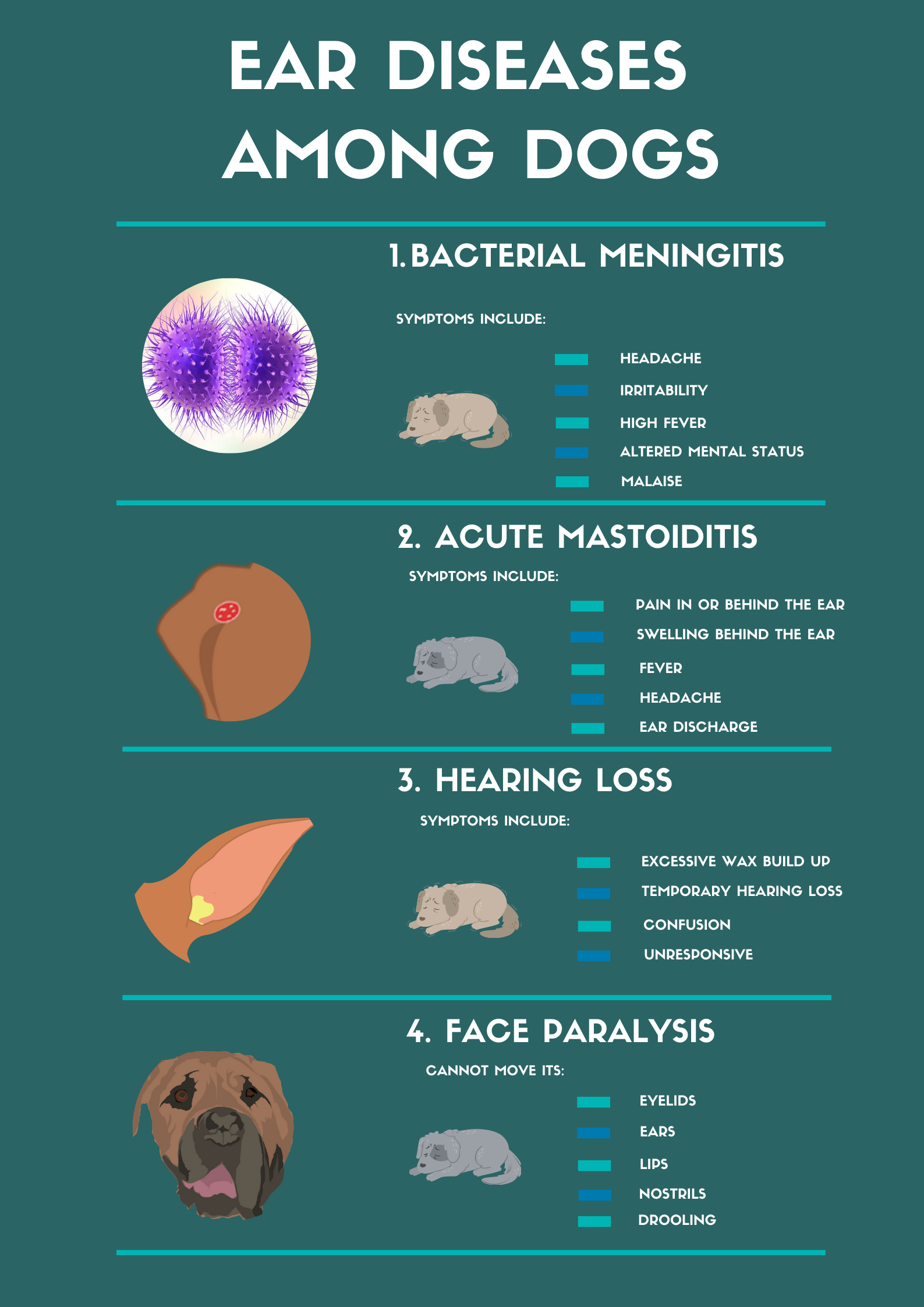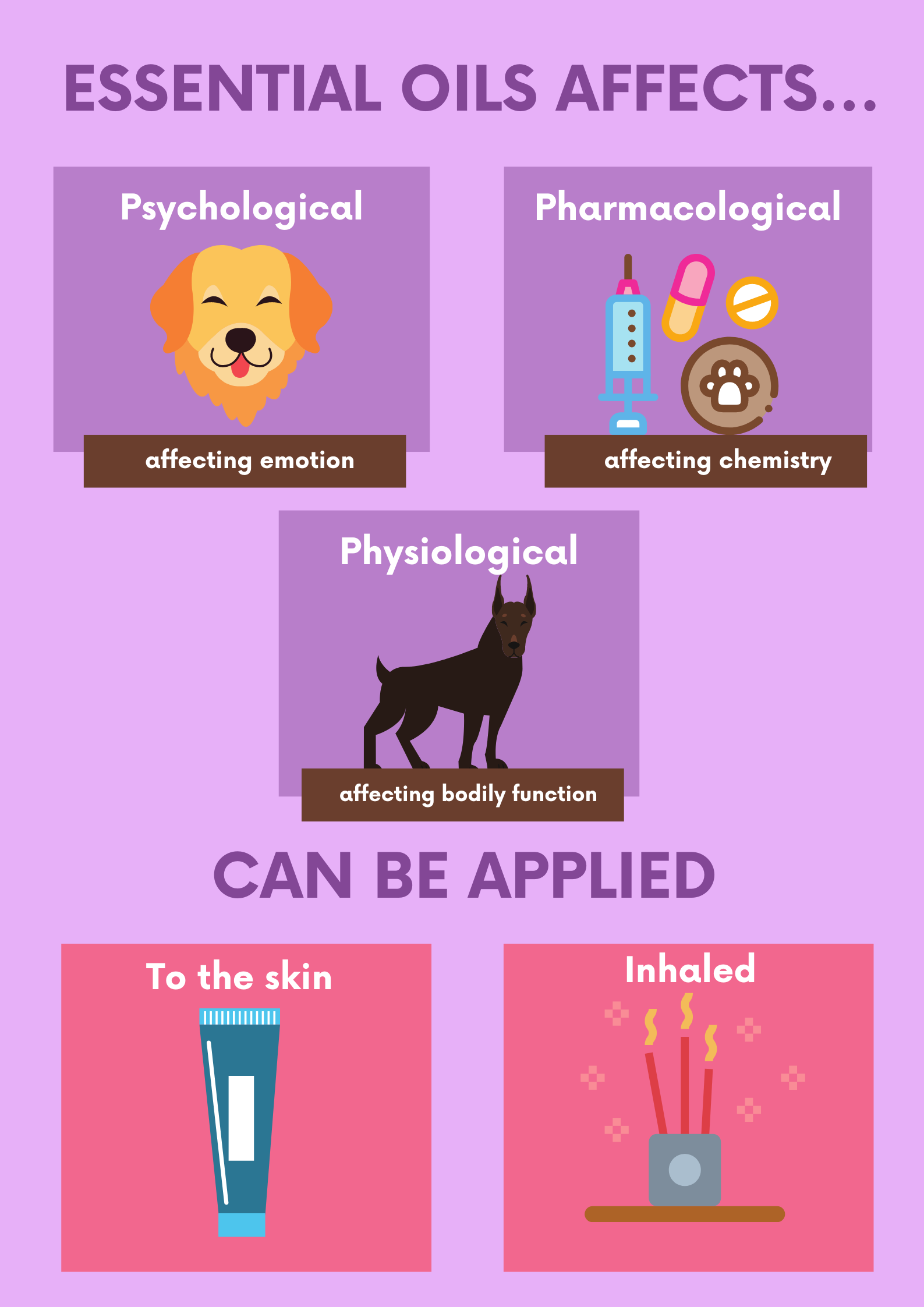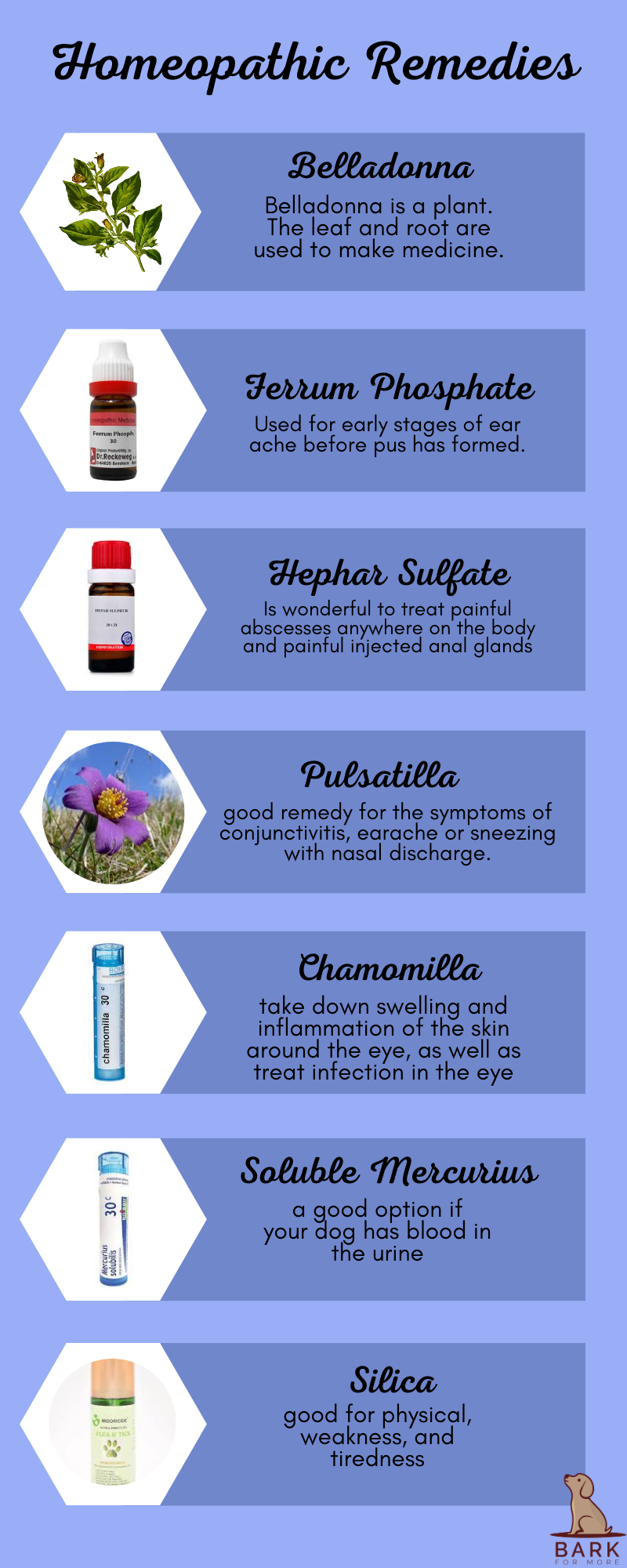Complete Guide to Treating Dog Ear Infection with Home Remedies
An essential aspect of dog grooming is ear cleaning. Without regular ear cleaning, dogs are at risk of getting ear infections that could potentially lead to hearing damage and other health complications. Ear infections are most commonly reported in dogs than in other animals affecting their normal behavior and utility (Singh et.al., 2019). Dog owners should, therefore, regularly clean their pets’ ears and examine if there are signs of inflammation, redness, discharge, and putrid odors. When these symptoms are seen in your dog’s ears, you should see your veterinarian as quickly as possible, as clear signs of an ear infection.
Ear Infection
In a study published by Jacobson (2002) in the Journal of South African Veterinary Association, he cited that the most common ear disease among dogs is the so-called otitis externa – an inflammation of the ear canal that often reflects an underlying dermatological disease. In the early stages of acute otitis externa, a wide range of clinical signs could already manifest, such as ear scratching, head shaking, otic discharge, acute dermatitis, malodor, pain, and swelling. Loyola University Health System (2018) cited other complications such as:

Bacterial Meningitis.
The symptoms include severe headache, irritability, high fever, altered mental status, and malaise. As the infection spreads, the dog develops more severe restlessness, delirium, and confusion.
Acute Mastoiditis.
This is an infection that affects the mastoid bone located behind the ear. It must be treated to prevent it from progressing to more serious complications.
Hearing Loss.
When excessive wax builds up in the ear canal, partial or temporary hearing loss could happen. But when ear infection becomes severe and is not given attention, permanent hearing loss will most likely happen.
Facial Paralysis.
An inner ear infection can cause facial paralysis in dogs. Facial paralysis can either be partial or total. In partial paralysis, the muscles of facial expression move less than normal. In total facial paralysis, the animal cannot move its eyelids, ears, lips, or nostrils and dogs often drool and have a dull facial expression.
In a similar study made by Rosser (2004), he enumerated the primary causes of otitis externa that are directly responsible for the inflammation of the external ear canal. These causes are as follows:

Parasites.
Otodectes cynotis (an ear mite), Demodex canis, Otobius meaning (ear tick) – these are some of the leading parasites that cause inflammation in the dog’s ear canal which then lead to head shaking and ear scratching.
Foreign bodies.
Plant awns like foxtails are a common cause of otitis externa during the foxtail season. This family of plants can get into the deepest part of the dog’s horizontal ear canal and can damage the tympanic membrane of the eardrum, thereby resulting in a concurrent otitis externa. Other kinds of foreign bodies observed to cause infections in dogs’ ears are sand, dirt, dried otic medications, dead insects (particularly flies and mosquitoes), and broken or loose hairs.
Allergic Diseases.
The presence of inflammation and pruritus (severe skin itching) not just on the dog’s ear but also on the other parts of the dog’s body is associated with atopic dermatitis or food allergy. The study revealed that 80% of the dogs with food allergy have otitis externa.
Keratinization disorders.
Hypothyroidism, hyperadrenocorticism, and sex hormone imbalance – all endocrine disorders – may change the keratinization production in the external ear canal thereby resulting in an initial ceruminous and seborrheic form of otitis externa.
So, in cases where dogs are showing symptoms of ear infection, what possible treatment could dog owners give to their pets? The first option on the table would be to go to a vet clinic and get medical prescriptions to buy antibiotics for the infection.
But, aside from medically-prescribed treatments, home remedy is also a good and effective alternative of treating dog ear infections. Not only that the negative side effects of medical prescriptions are avoided, all the essentials needed for the treatment are also available at home.
In an article published in the Austin Journal of Veterinary Science & Animal Husbandry, most commonly prescribed antibiotics to dogs with ear infections were not completely effective and might even be responsible for frequent treatment failure (Singh et.al., 2009).
Home Remedies
These home remedies listed below can significantly minimize the risk of complications caused by dog ear infections. Plus, they can all be done in the comforts of your own homes.
1. Clean the ear with a gentle cleanser
Cleaning your dog’s ears is an effective way to minimize ear infection and excess wax build-up. But since the ear is still painful due to inflammation, a gentle cleaning solution should be used to clean it.

How to do this: Pour an adequate amount of the cleaning solution into a perfectly-fitted cotton ball and place it in the ear canal opening, then gently massage the base of the ear for 10-20 seconds. You can repeat this process many times as long as your dog can tolerate it.
The cotton ball acts as a lid that allows the fluid to go back and forth in the canal and it absorbs the excess solution and holds onto the debris as it comes out, so you will know what is inside the ear canal. After the ear has been cleaned, allow it to dry for about 10 minutes.
Caution: There are few cautions to remember when doing this at home. One is that Q-Tip swabs should not be used to clean the dog’s ear as they may push debris deeper into the air canal which may rupture the eardrum. Another caution to be made is to not use rubbing alcohol or other strong solutions such as vinegar and hydrogen peroxide as they can irritate the inflamed skin.
2. Apply topical ointments
Applying ointments or drops into a dog’s infected ear can treat the infection inside since topical ointments are formulated to act as antifungal, antibiotic, and anti-inflammatory. As such, it can give a soothing effect to the dog’s ear and can reduce the swelling from within.

How to do this: Talk to your vet before using any topical ointment and follow the indicated dosage in the label. Don’t give your pet with more than what the label says and you must certainly follow the specified schedule for applying the ointment. The length of treatment depends on the severity of the infection and the improvements or changes that will manifest (Kristinsson et.al., 2005).
3. Homeopathy
The practice of homeopathy is based on the doctrine that a substance that causes the symptoms of a disease in healthy people would cure similar symptoms in sick people. It is one of the most widespread forms of alternative medicine that is used to treat ear infection and other skin diseases. Most homeopathic remedies combine the extract of a natural substance with a synthetic compound which enhances the therapeutic effect.
The table below shows the common homeopathic remedies for an ear infection (Marom et.al., 2016).
| Homeopathic Remedies | |
| Agent | Common Indications |
| 1. Belladonna |
|
| 2. Ferrum phosphate |
|
| 3. Hepar sulfate |
|
| 4. Pulsatilla |
|
| 5. Chamomilla |
|
| 6. Soluble Mercurius |
|
| 7. Silica |
|
4. Herbal medicine (Phytotherapy)
Herbal medicine is the use of plants for medicinal purposes. In general, herbal products are considered safe, although its effectiveness is still unclear and the side effects may vary. The study of the use of natural extracts as medicines or health-promoting agents is called phytotherapy.
Phytotherapy aims to preserve the complexity of plant substances by avoiding mixing it with synthetic substances. It has been reported to be effective in managing dog ear infections. Otic solutions that are used to treat infections of the dog’s ear canal contain extracts of the garlic bulb, mullein flower, yarrow, and calendula flower.
They are as effective as oral amoxicillin and topical anesthetics because of their presumed antimicrobial, anti-inflammatory, and immuno-stimulating effects, and they have a good penetration through the dog’s tympanic membrane (Marom et.al., 2016).
5. Aromatherapy (Essential Oils)
Due to their biological activities, essential oils are one of the natural interesting product groups use in different aspects of life. Aromatherapy or the use of essential oils is a great home remedy to treat dog ear infections, chronic pain, and anxieties, and they are safer and more natural.

Essential oils have psychological (affecting emotion), pharmacological (affecting chemistry), and physiological (affecting bodily function and process) benefits to dogs. The most common ways of using essential oils are by applying them to the skin (topical) and by breathing them in (inhalation). When used topically, essential oils can treat dog pains, skin diseases, and infections.
Essential oils are extracted from almost any part of plants such as flowers, seeds, fruits, leaves, stems, and roots. According to Wexner Medical Center (2018), these are the common essential oils and their uses:
| Essential Oils and their Uses | |
| Essential Oils | Uses |
| Chamomile | Fever, nausea, colds |
| Eucalyptus | Topical pain reliever and decongestant |
| Bergamot | Skin healing and anxiety-reducing |
| Lavender | Calming and sleep-inducing |
| Clove | Dental and pain-relieving |
| Rosemary | Skin, hair health, and joint pain |
| Peppermint | Cold and flu prevention, energy booster |
| Lemon | Natural household cleaner and disinfectant |
| Frankincense | Mood enhancer and stress reducer |
| Oregano | Skin healing |
Conclusion
Dog ear infections require immediate attention to stop the spread of the infection into the whole body. The usual course of action taken by dog owners is to use strong antibiotics, which, when used frequently, can eventually weaken the dog’s immune system. Also, the negative side effects of using medically-prescribed drugs for treatment might even lead to other complications.
Home remedies that involve the use of natural treatments are a great alternative to treat dog ear infections. These remedies are simple and straightforward measures to prevent a potentially complex health issue if you notice signs of an ear infection in your dog or if you think your dog is susceptible to it.
Thus, if your dog is suffering from dog infections, you can always recourse to these friendly and easy home remedies. Not only are they effective, but most importantly, they’re economical, safe, and won’t damage your pet dog’s health.
References:
Jacobson, L.S. (2002). Diagnosis and medical treatment of otitis externa in the dog and cat: A review article. Journal of South African Veterinary Association, 73(4): 162-170. https://www.ingentaconnect.com/content/sabinet/savet/2002/00000073/00000004/art00001
Kristinsson, K., Magnusdottir, A., Petersen, H., & Hermansson, A. (2005). Effective treatment of experimental acute otitis media by application of volatile fluids into the ear canal. The Journal of Infectious Diseases, 191(11): 1876-1880. https://doi.org/10.1086/430003
Loyola University Health System. (2018). Ear infections can lead to meningitis, brain abscess, and other neurological complications. https://www.sciencedaily.com/releases/2018/04/180416142450.htm
Marom, T., Marchisio, P., Tamir, S., Torretta, S., Gavriel, H., & Esposito, S. (2016). Complementary and alternative medicine treatment options for otitis media. Medicine, 95(6): e2695. https://insights.ovid.com/article/00005792-201602090-00044
Rosser, E. (2004). Causes of otitis externa. The Veterinary Clinics, 34: 459-468. https://maaz.ihmc.us/rid=1NH8B2M38-19HVX3W-1616/earprobs-Rosser2004.pdf
Singh, BR., Pawde, AM., Singh, SV., Agri, H., Sinha, DK., Vinodhkumar, OR., Zama, MMS., Kinjavdekar, P., Amarpal, & Saxena, AC. (2019). Ear infections in animals in Bareilly: Common causes and effective antimicrobials. Austin Journal of Veterinary Science & Animal Husbandry, 6(3): 1061.
Slater, V. (2018). How and why to use essential oils.






